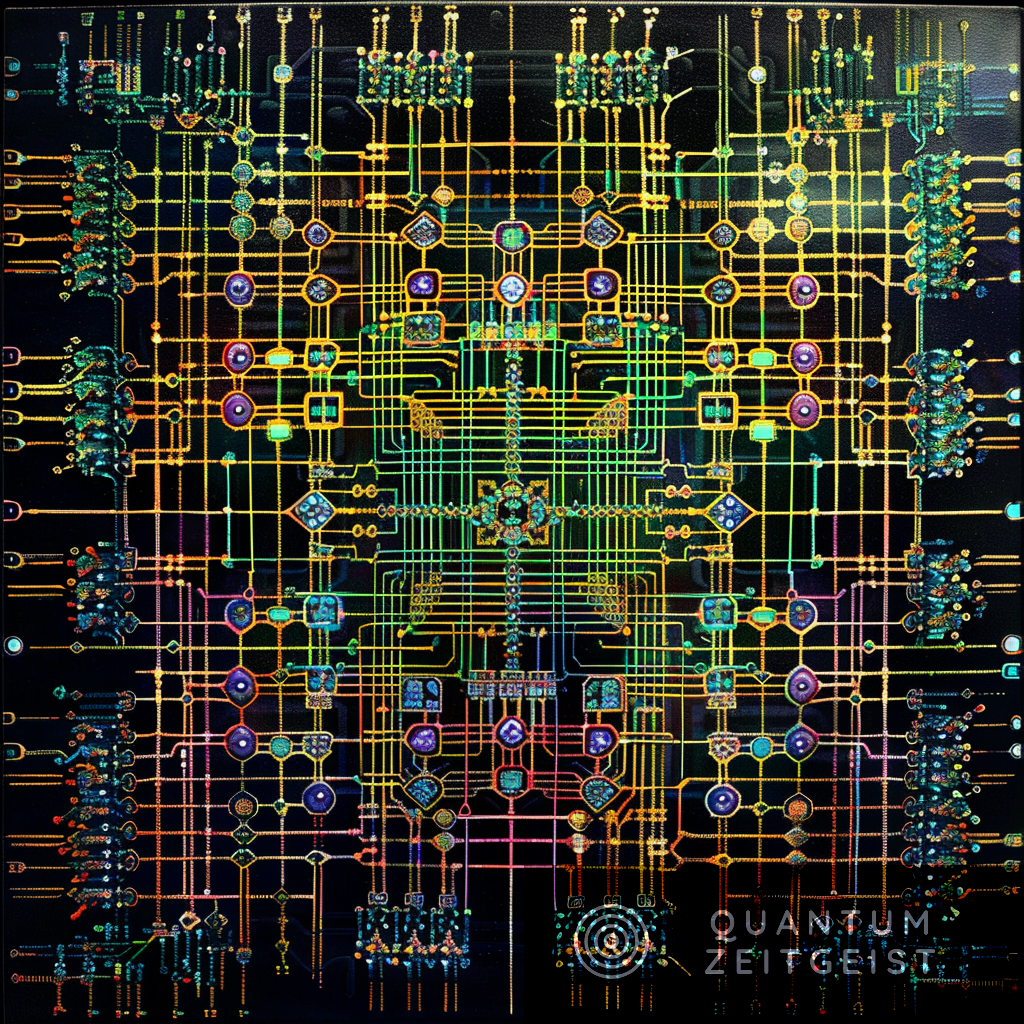Quantum computing, which uses quantum bits (qubits) that can exist in multiple states simultaneously, has the potential to process information much faster than classical computers. Quantum computers, like Google’s Sycamore and China’s Zuchongzhi 21, use quantum-specific algorithms to overcome classical computing limitations. Quantum algorithms are implemented using quantum logic gates, differing from classical ones. The concept of superposition in quantum computing allows a qubit to exist in multiple states at once. Dirac notation is used to describe quantum states and operations. Quantum computing could revolutionize information security, cloud computing, quantum simulation, and machine learning.
What is Quantum Computing, and How Does it Differ from Classical Computing?
Quantum computing is a concept that has been gaining popularity over the past few decades. It is a type of computing that uses quantum bits, or qubits, instead of the classical bits used in traditional computing. Classical bits can only exist in one of two states: 0 or 1. However, qubits can exist in a state of superposition, meaning they can be both 0 and 1 simultaneously. This ability to exist in multiple states at once gives quantum computers the potential to process information at a much faster rate than classical computers.
The development of quantum computers has been a hot topic in recent years. In 2019, Google’s Sycamore quantum computer, equipped with a 53-qubit processor, made headlines. Following this, researchers from China demonstrated in July 2021 that their quantum computer, Zuchongzhi 21, could achieve even more qubits than Sycamore, boasting a 66-qubit processor. To put this into perspective, an n-qubit quantum computer is equivalent to a 2^n-bit conventional computer. This means that quantum computing could potentially offer high-speed and high-performance algorithms.
The difference between classical and quantum bits has led to the development of quantum-specific algorithms. These algorithms aim to overcome the processing power limitations inherent in classical computing. Various fields of quantum computing have emerged, such as information security, cloud quantum computing, physical implementation of quantum computers and logic gates, quantum simulation, and quantum machine learning.
How are Quantum Algorithms Implemented and Compared to Classical Algorithms?
Quantum algorithms are implemented using quantum logic gates, which differ from classical logic gates. Classical gates, such as AND, OR, NOT, etc., are generally classified as classical gates. However, some quantum gates are known as Pauli gates, Toffoli gates, and Hadamard gates. The underlying principles of algorithm implementation for classical and quantum logic gates are different.
This paper introduces significant concepts of quantum computations, analyzes the discrepancy between classical and quantum gates, compares quantum algorithms using Qiskit against equivalent classical algorithms, and analyzes their performance in terms of runtime. Qiskit is a cloud quantum computer that provides quantum computing services accessible through the internet.
What is the Concept of Superposition in Quantum Computing?
In quantum computing, superposition refers to the ability of a quantum bit, or qubit, to exist in multiple states at once. This contrasts classical bits, which can only exist in one of two states: 0 or 1. Superposition is known in wave physics as the interference of two or more waves. In quantum physics, when a particle is tiny, it behaves like a wave. This is called wave-particle duality, and the particle is said to be in a superposition state.
However, when the quantum particle is observed or measured, this wave collapses, degenerating from the wave into a classical particle. This phenomenon is called the measurement problem of quantum mechanics, and physicists are still trying to understand the mechanism and theory behind it.
What is Dirac Notation, and How is it Used in Quantum Computing?
Dirac notation is a standard mathematical notation used in quantum mechanics. It describes quantum states and the operations that can be performed on them. In the context of quantum computing, Dirac notation describes the states of qubits and the operations that can be performed on them.
Consider two 2-dimensional column vectors in Hilbert space with complex entries. The terms ‘ket’ and ‘bra’ are defined in Dirac notation. The ‘ket’ represents a column vector, while the ‘bra’ represents the complex conjugate transpose of a column vector. The inner product and outer product of these vectors can be derived using Dirac notation.
What are the Potential Applications of Quantum Computing?
Quantum computing has the potential to revolutionize various fields. One of the main objectives of quantum computing is to overcome the limitations of processing power inherent in classical computing. This could have significant implications for information security, focusing on potential threats to existing cryptography.
Cloud quantum computing, such as Qiskit, provides quantum computing services accessible through the internet. This could make the power of quantum computing available to a broader range of users.
The physical implementation of quantum computers and logic gates is another popular field of quantum computing. Quantum simulation, which emphasizes modeling the quantum properties of microscopic particles, could have applications in quantum chemistry, material science, and high-energy physics.
Finally, quantum machine learning is frequently stated as the most promising application for quantum computing. By harnessing the power of quantum computing, machine learning algorithms could be run much more efficiently, leading to faster and more accurate results.
Publication details: “Implementation of Grover’s Algorithm & Bernstein-Vazirani Algorithm with IBM Qiskit”
Publication Date: 2024-02-14
Authors: Y. Liu and Meifeng Liu
Source: Journal of Informatics and Web Engineering
DOI: https://doi.org/10.33093/jiwe.2024.3.1.6

